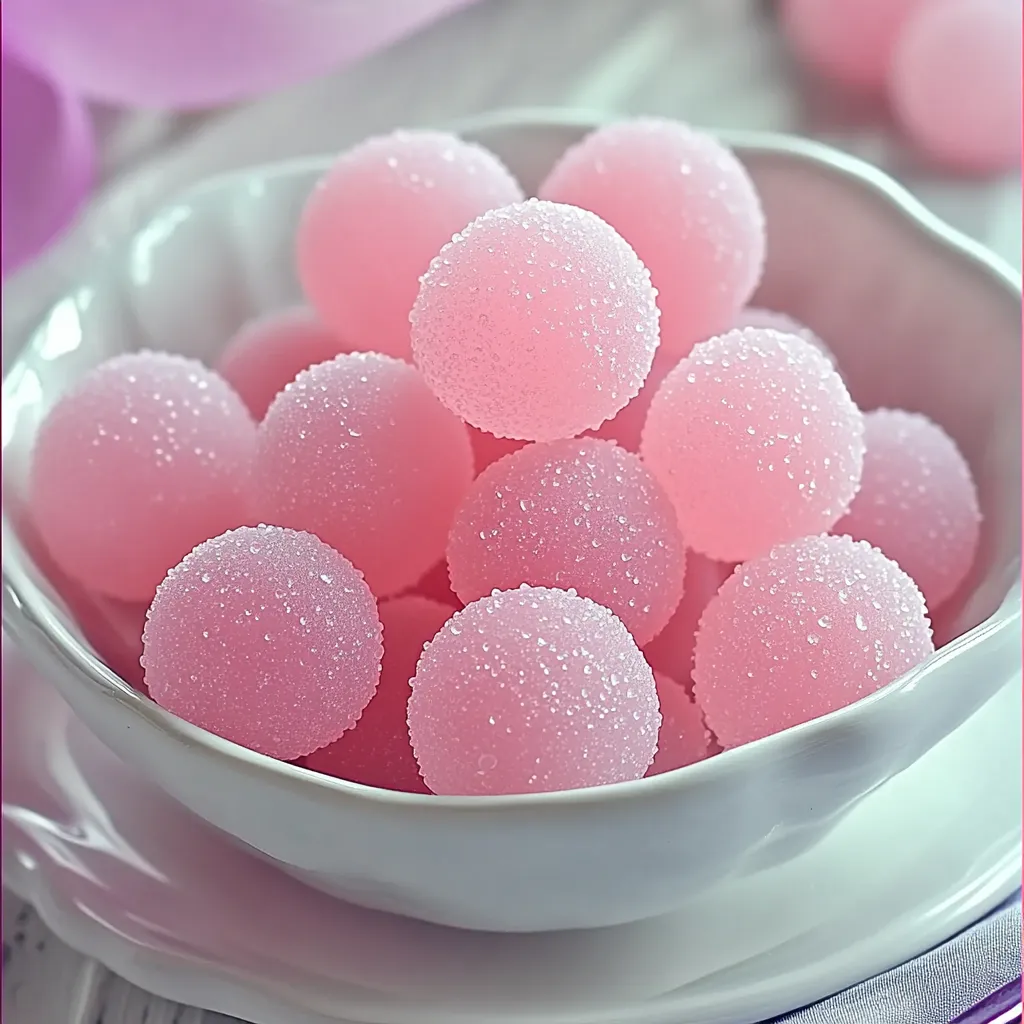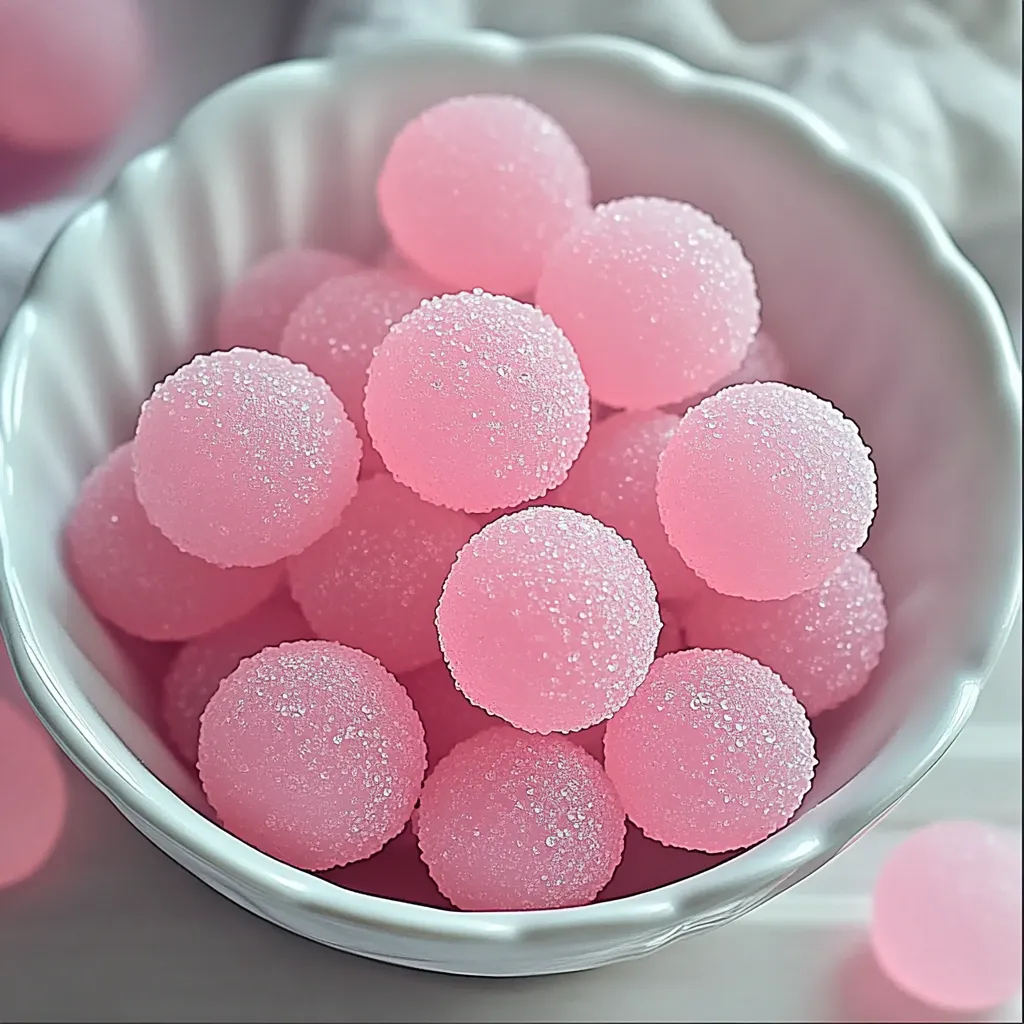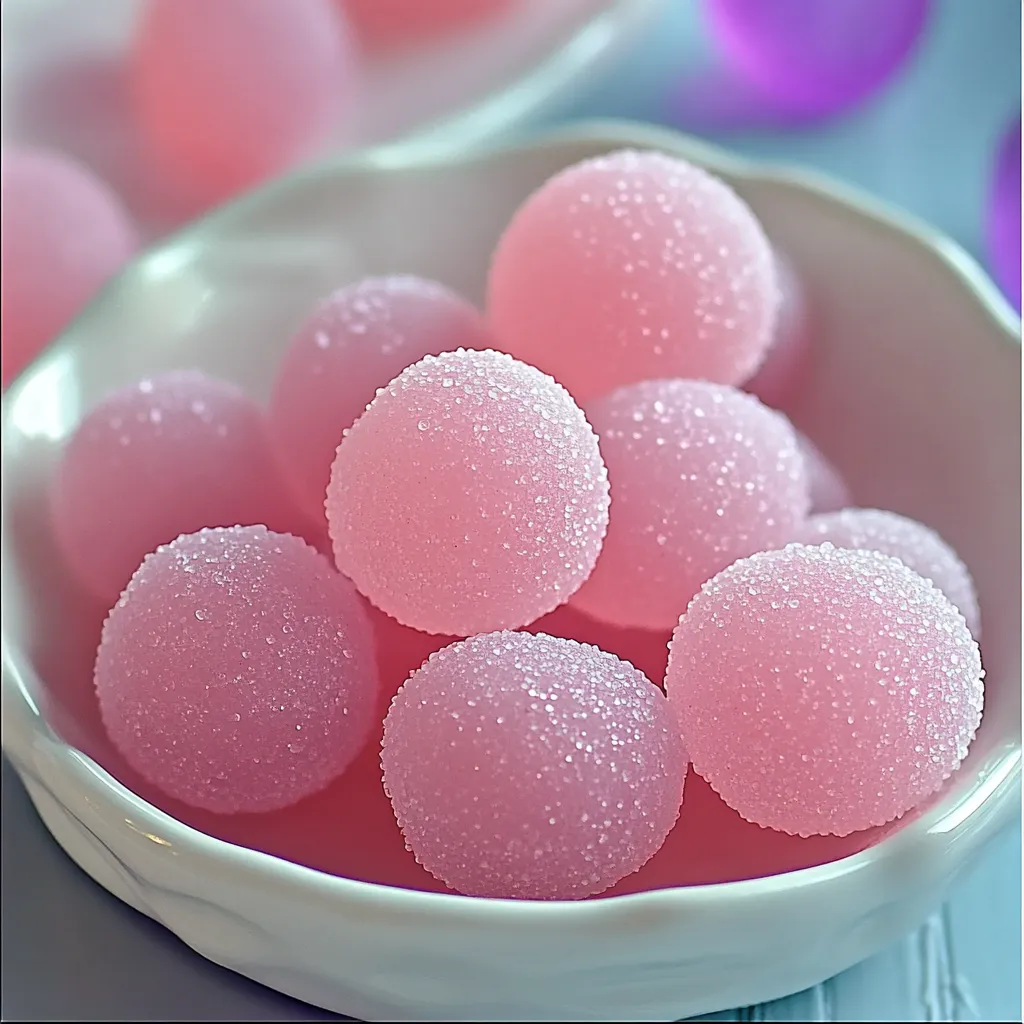 Pin it
Pin it
This homemade bubble gum recipe transforms simple kitchen ingredients into a fun, chewy treat that will delight both kids and adults. Creating your own bubble gum allows you to customize flavors and colors while avoiding the commercial additives found in store-bought versions.
I first made this bubble gum during a summer break when my nieces and nephews were visiting. Their amazement at creating something they usually only bought at stores turned into an annual tradition we all look forward to.
Ingredients
- White granulated sugar: Forms the sweet base that gives the gum its essential flavor profile
- Light corn syrup: Creates the stretchy, chewy texture necessary for proper bubble blowing
- Unflavored gelatin powder: Provides the distinctive bounce and elasticity that makes bubble gum special
- Fine salt: Enhances all flavors and balances the sweetness for a more complex taste experience
- Food coloring: Adds visual appeal and makes the process more exciting for children
- Flavor extracts: Allow for customization look for oil based extracts for more pronounced flavor
- Powdered sugar: Prevents sticking during the kneading process and adds a light sweetness
Step-by-Step Instructions
- Prepare the Gelatin:
- Sprinkle the unflavored gelatin over 1/4 cup of water in a small bowl. Allow it to rest for 5 minutes until fully hydrated. This blooming process ensures the gelatin dissolves completely without lumps, creating that perfect gummy texture we all love in bubble gum.
- Cook the Sweet Base:
- Combine granulated sugar, corn syrup, and remaining 1/4 cup water in a medium saucepan. Stir gently over medium heat until the sugar completely dissolves and the mixture turns clear. Watch carefully to prevent any crystallization on the sides of the pan, as this could affect the final texture.
- Bring to the Right Temperature:
- Increase the heat slightly and allow the mixture to reach a boil. Insert a candy thermometer and cook until the mixture hits exactly 300°F, known as the hard crack stage. This precise temperature is crucial if you want your gum to have that perfect chewiness without being too hard or too soft.
- Incorporate Flavor and Color:
- Remove from heat immediately when temperature is reached. Quickly stir in the softened gelatin, salt, desired food coloring, and flavor extract. Mix thoroughly until completely smooth and evenly distributed. Work fast during this step as the mixture begins setting quickly once off the heat.
- Cool and Thicken:
- Pour the hot mixture into a heatproof bowl or onto a silicone mat. Allow it to cool for 20–30 minutes until it thickens to a honey like consistency. During this time, prepare your kneading surface with a generous dusting of powdered sugar.
- Knead the Bubble Gum:
- Transfer the sticky mixture onto a powdered sugar dusted surface. Knead thoroughly until smooth, pliable, and no longer sticky. This process takes about 10 minutes of consistent working the dough, developing the stretch and elasticity that makes bubble gum special.
- Shape and Cut:
- Roll the kneaded gum into long ropes, flatten into sheets, or form small balls according to preference. Place finished pieces on wax paper to prevent sticking. For uniform pieces, use kitchen scissors to cut equal portions.
 Pin it
Pin it
The gelatin is truly the magic ingredient in this recipe. The first time I made this with my family, we experimented with different amounts and discovered that this precise measurement creates the perfect chew that satisfies without tiring your jaw like some commercial brands do.
Storage and Shelf Life
Homemade bubble gum lacks the commercial preservatives of store-bought varieties, so proper storage is essential. Wrap individual pieces in wax paper squares and store in an airtight container at room temperature. Avoid refrigeration as this can make the gum too firm. When stored properly, your homemade gum will maintain its texture and flavor for approximately two weeks. If the gum begins to harden, a few seconds in the microwave can revive its chewiness.
Flavor Variations
The beauty of making bubble gum at home is the endless flavor possibilities. For traditional bubble gum flavor, use bubble gum flavoring oil available at craft stores. Fruit combinations work wonderfully try mixing strawberry and banana extracts for a tropical twist. Mint flavors like peppermint or wintergreen provide a refreshing alternative. For added dimension, consider adding a drop of citric acid to fruit flavors for a slight tanginess that complements the sweetness perfectly.
Troubleshooting Common Issues
If your gum turns out too sticky, the mixture likely didn't reach the proper temperature. Always use a reliable candy thermometer and make sure it doesn't touch the bottom of the pot. When the gum is too hard, it was probably cooked slightly beyond the target temperature. In this case, a tiny bit of warm water worked into the mixture during kneading can help. Grainy texture indicates sugar crystallization occurred during cooking prevent this by avoiding stirring once the mixture begins to boil.
 Pin it
Pin it
Making homemade bubble gum is a rewarding activity that combines fun with culinary creativity, leaving everyone delighted with the results.
Frequently Asked Questions
- → How long does homemade bubble gum last?
Homemade bubble gum typically lasts 1-2 weeks when stored properly in an airtight container at room temperature. For best texture and flavor, wrap individual pieces in wax paper to prevent sticking and keep them separated.
- → Can I use different sweeteners instead of corn syrup?
Yes, you can substitute honey or glucose syrup for corn syrup in equal amounts. However, these alternatives may slightly alter the final texture and stretching properties of your bubble gum.
- → Why is my homemade bubble gum too sticky?
Excessive stickiness usually indicates that you need more powdered sugar during the kneading process. Add it gradually while working the mixture until you achieve a smooth, pliable consistency that doesn't stick to your hands.
- → What flavoring extracts work best for bubble gum?
Traditional bubble gum flavors include cherry, grape, watermelon, strawberry, and mint. For authentic bubble gum flavor, you can use specialty bubble gum flavoring oil available at candy-making supply stores or online.
- → Is homemade bubble gum safe for children?
Homemade bubble gum is generally safe for children but should be enjoyed with adult supervision, especially for younger kids. The cooking process involves very hot sugar syrup that can cause burns, and the finished product presents a choking hazard for very young children.
- → Can this bubble gum actually make bubbles?
Yes! While homemade bubble gum may not produce bubbles as large as commercial varieties, it will still bubble. The key is kneading it thoroughly to develop elasticity. The bubbling quality improves after the gum has been chewed for a few minutes.
